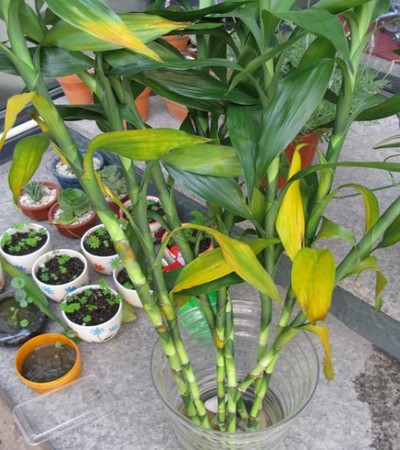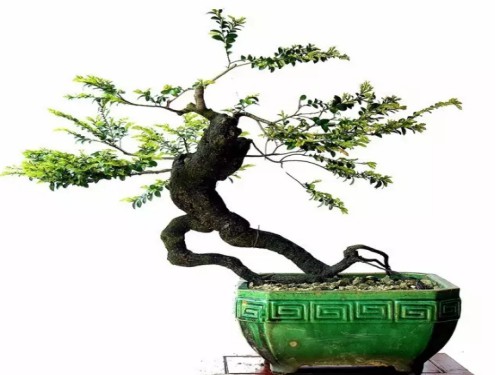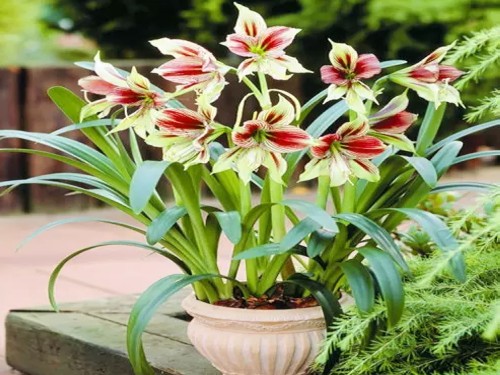What about yellow bamboo leaves?
Bamboo grows fast and is easy to cultivate. Even submerged basin soil with water can grow well and can be born in water, so it is also called water bamboo. Born with a gentle and quiet posture, tall stems and luxuriant leaves, distinct layers, elegant and natural, evergreen all the year round, it is not only a good food for indoor food, but also a good material for cut flowers. The utility model has the advantages of simple maintenance and extensive management, but water planting can also be potted. Therefore, it is favored by bonsai lovers.

Analysis of the causes of yellowing of bamboo leaves:
1. Water yellow: do not accumulate water in the flowerpot. The water is easy to rot, roots and leaves are withered and yellow.
Solution: put the flowers out of the pot in a ventilated, cool, self-drying soil mass and then put them back into the basin.
2. Dry yellow: bamboo likes to be moist, if you ignore watering, or only irrigate the topsoil, the roots do not absorb enough water, and the stems and leaves turn yellow slowly.
Solution: pay attention to watering enough and thoroughly.
3. Burning yellow: bamboo can not shine directly in the strong sun, which will cause withered and yellow branches and leaves.
Solution: just move to a cool place.
4. lack of light and yellow: bamboo likes warmth and is placed in a shady environment for a long time, and the plant grows weakly and then turns yellow. It is best to put it in a place with plenty of sun in winter, if you put it in a place where there is not enough light, coupled with poor ventilation and cold, it is easy to cause withered and yellow branches and leaves.
Solution: supplementing light can avoid this disease.
5. Fat yellow: if the concentration is too high or the fertilizer is not yet ripe, it is easy to burn the seedlings even if they dry up and turn yellow if they are not topdressing for a long time.
Solution: should immediately stop fertilization, seriously wash part of the fertilizer with a lot of washing.
6, lack of fat yellow: to regularly fertilize asparagus, so that it has enough nutrients, nutrients in short supply, there will be the phenomenon of branches and leaves yellowing.
Solution: check the basin soil, if there is a dry phenomenon should change the soil, usually apply thin fertilizer frequently and timely sprinkle some alum (Fugui bamboo is foliage plants should be nitrogen-based fertilizer).
Another reason for the yellowing leaves is the lack of iron. You can buy some ferrous sulfate and put it in the water according to the instructions. The easiest way is to find two small iron nails and put them in the water (preferably rusty nails).
The maintenance of water bamboo should pay attention to the following points:
1. Bamboo likes to be warm and afraid of stagnant water, so it is wrong to soak bamboo in a plate filled with water for a long time, which can easily lead to rotting roots. The rot of the fibrous root causes the leaves to turn yellowish and then dark yellow. Although water bamboo likes water, it can not be soaked in stagnant water. Flowing water is better. In summer, water can be watered every 1-2 days on average, and water can be sprayed on the leaf surface at ordinary times. Evaporation is large in summer, so pay attention to mixing and changing water so as to keep the water quality from pollution. Dry in autumn, to prevent being blown down by the wind, you can often spray "new high-fat film" emulsion moisturizing to the leaves to enhance the ability to resist natural disasters. Let it bear the night dew at night. Spray water on the bamboo leaves many times a day until the water extends from the bottom of the water-growing basket, and continue to lower the water surface to induce the roots to continue to grow into the water until you are satisfied with the length. Pay attention to avoiding light, ventilation and moisturizing before coming out of the water root.
2. Bamboo should be fertilized with thin fertilizer frequently, and 1% compound fertilizer can be applied in spring and summer. Avoid applying too much fertilizer can easily cause leaves to turn yellow.
3. Bamboo likes acidic and slightly acidic water quality. As the soil in most areas of the north contains more salt and alkali, bamboo will gradually lose green and turn yellow due to the lack of soluble iron elements that can be absorbed by flowers after a period of time. 0.2% ferrous sulfate can be watered once a month.
4. Move the bamboo to a cool place in the hot season to avoid hot sun exposure, which will burn the leaves. Maintain a certain humidity in winter, and properly pruned, placed in a warm and sunny place indoors, the temperature is not less than 5 ℃ can safely survive the winter. High temperature or low temperature season can spray "new high fat film" emulsion anti-sun exposure, anti-water transpiration, anti-freezing, anti-cold. In addition, attention should be paid to the harm of aphids and scale insects.
Experience of bamboo conservation:
1. Proper watering: sufficient water for promoting bamboo shoots should be watered every spring (March), and jointing water should be irrigated in May and June. The rainy season can be watered according to rainfall, bamboo shoots are watered in November and early December, and water can be sprayed properly when it is too dry in winter. After bamboo planting, no matter whether it is windy or rainy, it should be drenched and filled with soil, just like the maintenance of other seedlings, it should be drenched with root water.
2. Loosening the soil and weeding: twice a year, the first in May and June, and the second in July and August before the weed seeds are ripe.
3. Rational fertilization: in order to promote bamboo regeneration and forest ahead of time, fertilizer should be applied in time. The best fertilization time is early spring in March and August to September, and the effect of the combination of farm manure and chemical fertilizer is good. The application of organic fertilizer such as cake fertilizer and soil fertilizer in autumn and winter is beneficial to overwintering bamboo shoots. The application of human dung, urine and chemical fertilizer in spring and summer can meet the needs of bamboo growth and development in time.
4. Reasonable thinning: Hsinchu germinates quickly and has a large number, but its size is uneven, so it should be thinned in time. In thinning, we should go to the small to stay big, to the weak to stay strong, to the old to stay young, and to dense to keep thin. Every 3 to 5 years, dense bamboo should be moved to maintain proper density of bamboo forest to ensure ventilation and light transmission. At the same time, deep turning and breaking whips are carried out to dig out the old whips that are more than four years old and the bamboo strips that are cut down every year. The potholes should be filled with soil and mixed fertilizer in time to keep the woodland flat after moving and digging bamboo strips.
5. Bamboo forest planning: under the condition of abundant land and landscape needs, turn the soil deeply in the direction of bamboo forest plan extension, and apply soil and miscellaneous fertilizer to guide bamboo whip extension.
Time: 2019-06-01 Click:
- Prev

Maintenance method of bonsai of black bone tea
Black bone tea is mainly a bonsai tree species dominated by viewing leaves. The leaves of black bone tea bonsai are relatively small and dark green, its bark and roots are black, and its wood is very hard, but its growth rate is very slow. Shaped big tree-shaped works have only been seen in bonsai magazines in Taiwan.
- Next

Why doesn't Zhu Dinghong bloom?
Zhu Dinghong is suitable for potted and ground cultivation, but it is not suitable for long-term hydroponic culture. After the end of flowering, there will be a long growth period for corm recovery, so its ability of reflowering is strong and its ability of degeneration is weak. If properly maintained, the bulbs will grow bigger and bigger, and the number and times of flowering will increase year by year. Soon after the year, the flowers withered
Related
- Fuxing push coffee new agricultural production and marketing class: lack of small-scale processing plants
- Jujube rice field leisure farm deep ploughing Yilan for five years to create a space for organic food and play
- Nongyu Farm-A trial of organic papaya for brave women with advanced technology
- Four points for attention in the prevention and control of diseases and insect pests of edible fungi
- How to add nutrient solution to Edible Fungi
- Is there any good way to control edible fungus mites?
- Open Inoculation Technology of Edible Fungi
- Is there any clever way to use fertilizer for edible fungus in winter?
- What agents are used to kill the pathogens of edible fungi in the mushroom shed?
- Rapid drying of Edible Fungi

